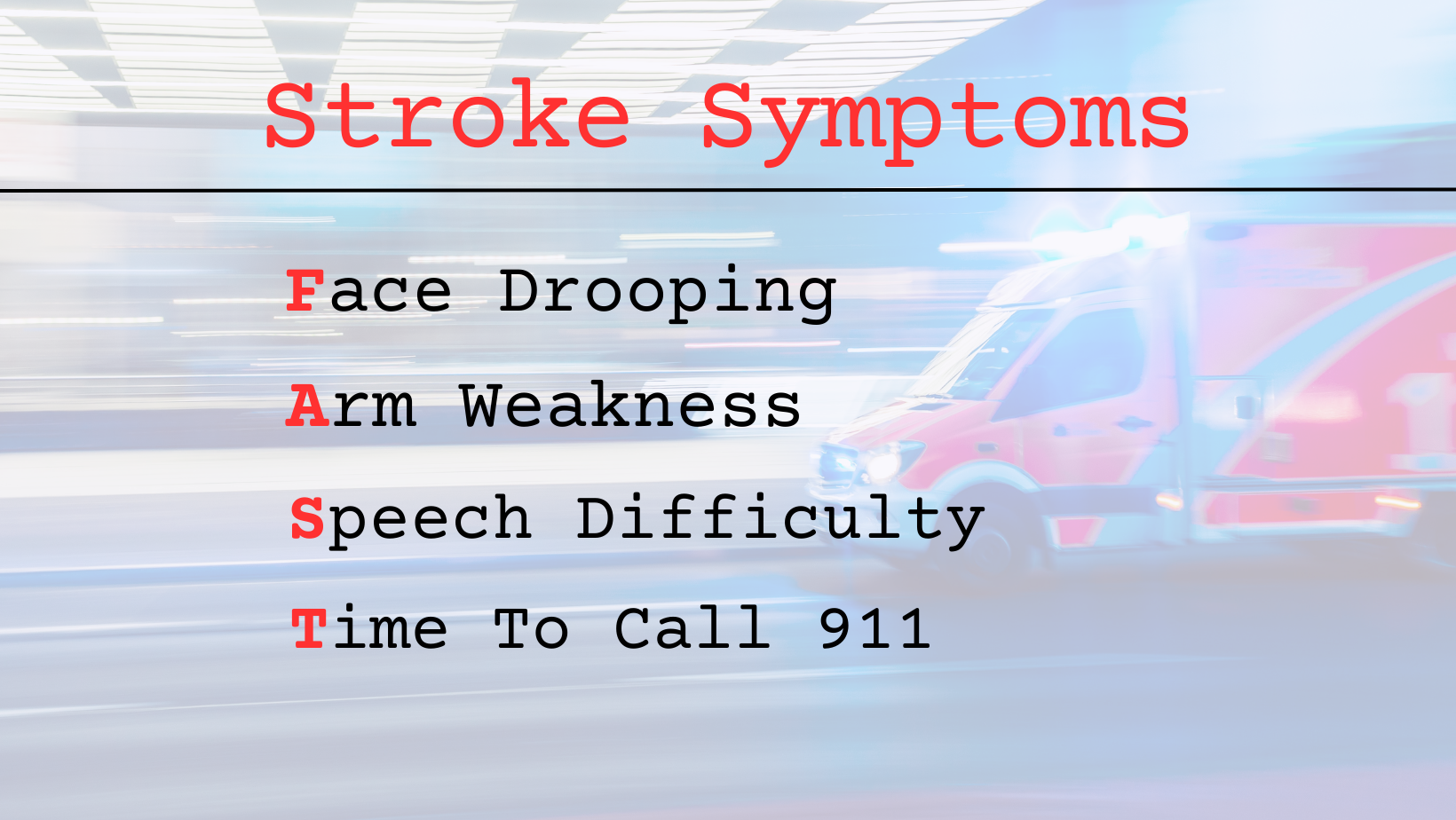Stroke Awareness and Prevention
According to the CDC, stroke is a leading cause of death in the United States and is a major cause of serious disability for adults. What is even more disturbing is that nearly 80% of strokes are preventable.
With lifestyle changes, you can greatly reduce your risk for stroke. Three things that are very important are controlling your blood pressure, managing cholesterol levels, and maintaining a healthy weight, whether through lifestyle alone or with medication.
Smoking, drinking too much alcohol, and not getting enough exercise are risk factors for a stroke.
High blood pressure is the single most important treatable risk factor for stroke. Preventing, diagnosing, and controlling it through lifestyle changes and medicine are critical to reducing stroke risks.
An easy way to remember the most common signs of stroke and how to respond is with the acronym F.A.S.T
F = Face drooping: Ask the person to smile. Does one side droop?
A = Arm weakness: Ask the person to raise both arms. Does one arm drift downward?
S = Speech difficulty: Ask the person to repeat a simple sentence. Are the words slurred?
T = Time to call 9-1-1: If the person shows any of these signs, call 9-1-1 immediately. Stroke treatment can begin in the ambulance.
Other common signs of stroke:
Sudden dizziness, trouble walking, or loss of balance or coordination
Sudden trouble seeing in one or both eyes
Sudden severe headache with no known cause
Sudden numbness of the face, arm, or leg
Sudden confusion or trouble understanding others
Reduce your risk for stroke
*Eat a healthy diet low in sodium with plenty of fruits and vegetables. Tips on nutrition are available at CDC’s Division of Nutrition, Physical Activity, and Obesity
*Maintain a healthy weight. CDC’s Healthy Weight website includes information and tools to help you lose weight.
*Be physically active. Visit CDC’s Physical Activity website for more information on being active.
*Don’t smoke and avoid secondhand smoke. CDC’s Office on Smoking and Health website has information on quitting smoking.
*Limit alcohol use. See CDC’s Alcohol and Public Health website for more information.
*Prevent or manage your health conditions, especially high blood pressure, high cholesterol, diabetes, and obesity. Visit CDC’s High Blood Pressure, Cholesterol, and Diabetes webpages on these conditions to learn more. https://www.cdc.gov/stroke/facts_stroke.htm
Information provided by Tiffani Flaws, Patient Advocacy Clinical Supervisor

